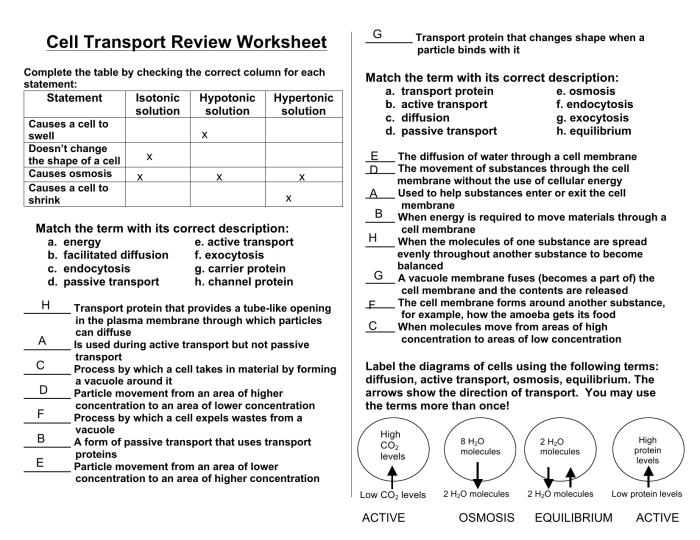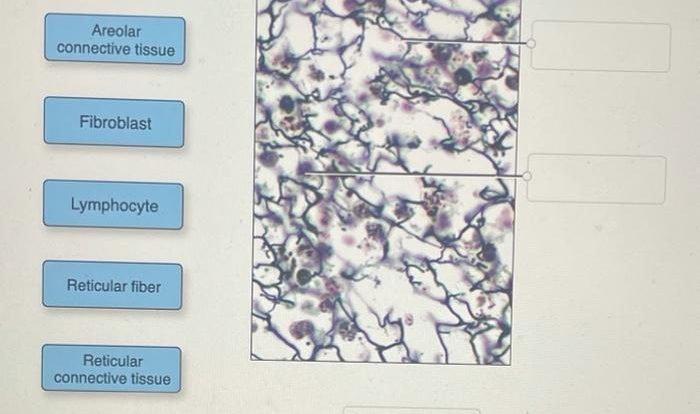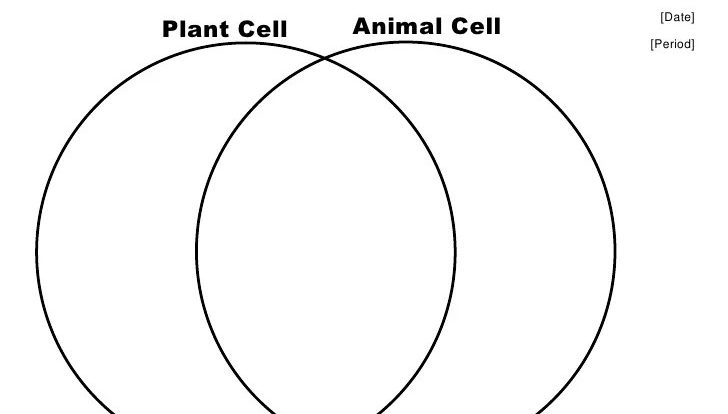Cell membrane and transport worksheet answer key – Unveiling the secrets of cell membrane and transport, this comprehensive answer key empowers learners to grasp the fundamental principles that govern cellular function. Embark on a journey into the intricate world of cell membranes, exploring their structure, transport mechanisms, and pivotal role in biological processes.
Delving into the intricacies of passive and active transport, membrane channels and carriers, and factors influencing membrane transport rates, this guide illuminates the complexities of cellular dynamics. Discover how membrane transport underpins nutrient uptake, waste removal, cell signaling, drug delivery, and biotechnology applications.
Cell Membrane and Transport

The cell membrane, also known as the plasma membrane, is a thin layer that surrounds all cells. It acts as a barrier between the cell and its surroundings, controlling the movement of substances into and out of the cell. The cell membrane is selectively permeable, allowing some substances to pass through while blocking others.
Structure of the Cell Membrane
The cell membrane is composed of a phospholipid bilayer, a double layer of phospholipids. Phospholipids are molecules that have a hydrophilic (water-loving) head and a hydrophobic (water-hating) tail. The hydrophilic heads face outward, while the hydrophobic tails face inward. This arrangement creates a barrier that is impermeable to most molecules.
Types of Membrane Transport, Cell membrane and transport worksheet answer key
Passive Transport
Passive transport is the movement of substances across a membrane without the need for energy. This type of transport occurs when the concentration of a substance is higher on one side of the membrane than the other. Substances move down their concentration gradient, from an area of high concentration to an area of low concentration.
- Diffusion: The movement of a substance from an area of high concentration to an area of low concentration. Diffusion is a passive transport process that does not require energy.
- Osmosis: The movement of water across a semipermeable membrane from an area of high water concentration to an area of low water concentration. Osmosis is a special type of diffusion that occurs when water molecules move across a membrane that is impermeable to other substances.
Active Transport
Active transport is the movement of substances across a membrane against their concentration gradient. This type of transport requires energy, which is provided by ATP. Substances move from an area of low concentration to an area of high concentration.
- Primary active transport: The movement of a substance across a membrane against its concentration gradient using energy from ATP.
- Secondary active transport: The movement of a substance across a membrane against its concentration gradient using energy from another substance that is moving down its concentration gradient.
Role of Membrane Channels and Carriers
Membrane channels and carriers are proteins that help substances move across the cell membrane. Channels are pores that allow substances to pass through the membrane without the need for energy. Carriers bind to substances and transport them across the membrane, using energy from ATP.
Factors Affecting Membrane Transport
Membrane Permeability
The permeability of a membrane is its ability to allow substances to pass through. The permeability of a membrane is affected by the thickness of the membrane, the composition of the membrane, and the temperature of the membrane.
Temperature
The temperature of the membrane affects the rate of membrane transport. The higher the temperature, the faster the rate of membrane transport.
pH
The pH of the membrane affects the rate of membrane transport. The lower the pH, the faster the rate of membrane transport.
Ion Concentration
The ion concentration of the membrane affects the rate of membrane transport. The higher the ion concentration, the faster the rate of membrane transport.
Membrane Fluidity
The fluidity of the membrane affects the rate of membrane transport. The more fluid the membrane, the faster the rate of membrane transport.
Applications of Membrane Transport
Nutrient Uptake
Membrane transport is essential for the uptake of nutrients into cells. Nutrients are transported into cells by passive transport or active transport.
Waste Removal
Membrane transport is essential for the removal of waste products from cells. Waste products are transported out of cells by passive transport or active transport.
Cell Signaling
Membrane transport is essential for cell signaling. Cells communicate with each other by sending and receiving chemical signals. These signals are transported across the cell membrane by membrane transport.
Medical Treatments
Membrane transport is essential for the delivery of drugs into cells. Drugs are transported into cells by passive transport or active transport.
Biotechnology and Industrial Applications
Membrane transport is used in a variety of biotechnology and industrial applications. For example, membrane transport is used in the production of biofuels and in the purification of water.
Quick FAQs: Cell Membrane And Transport Worksheet Answer Key
What is the primary function of cell membranes?
Cell membranes regulate the passage of substances into and out of cells, maintaining cellular homeostasis and compartmentalization.
Explain the difference between passive and active transport.
Passive transport involves the movement of substances down their concentration gradient without energy expenditure, while active transport requires energy to move substances against their concentration gradient.
How do membrane channels and carriers facilitate transport?
Membrane channels provide pores for the movement of specific ions or molecules, while membrane carriers bind to substances and undergo conformational changes to transport them across the membrane.


